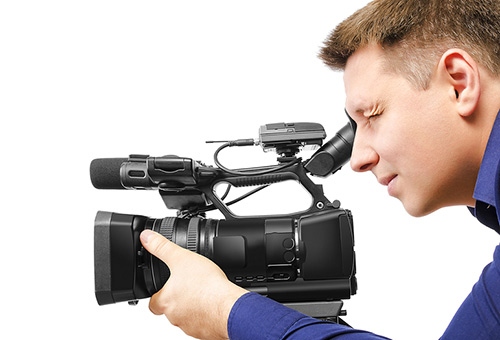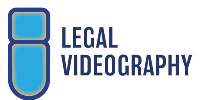Exactly How Legal Videography Boosts Precision in Courtroom Proceedings
Key Advantages of Utilizing Videography in Legal Situations
The assimilation of videography in legal instances presents a range of tactical advantages that can substantially affect test outcomes. As the legal landscape continues to advance, the implications of leveraging videography in trial setups merit closer examination, particularly in understanding just how these advantages equate right into substantial outcomes in the court.
Improved Evidence Presentation
Improved proof presentation via videography has changed the means lawful situations are argued and recognized in the courtroom. By integrating top notch video clip recordings right into lawful process, attorneys can communicate complex info in a much more appealing and comprehensible way - Legal Videography. Videography permits the visualization of evidence, making it much easier for discretionary to understand the context and value of today realities
In enhancement to boosting quality, videography can additionally capture real-time events, supplying an authentic depiction of occurrences important to an instance. This immediacy can considerably affect the persuasiveness of a disagreement, as aesthetic proof often reverberates a lot more strongly than written documents. Moreover, video evidence can consist of critical aspects such as body language, intonation, and ecological factors, every one of which contribute to an extra holistic understanding of the situation.
Making use of videography also enables effective company of proof, making it possible for lawyers to provide their debates in a meaningful and logical way. By tactically including video into their presentations, lawyers can promote a much more reliable evaluation of the evidence, ultimately causing educated decision-making by the court. The transformative power of videography in lawful contexts is both important and obvious.
Improved Witness Reputation

Video clip proof can also alleviate potential biases that might occur from the witness's look or mannerisms in an online setup. By offering a well-produced video clip, lawful teams can guarantee that the focus continues to be on the web content of the testimony as opposed to additional elements that could undermine trustworthiness. The chance to assess documented declarations can fortify witness consistency, as disparities can be dealt with prior to trial, leading to even more trusted testaments.
Additionally, the permanence of videography provides a secure versus memory degeneration or misconception gradually. By having a clear, verifiable account of witness statements, legal experts can develop a more powerful case, strengthening the overall integrity of the witness and, subsequently, the stability of the judicial procedure.
Engaging Court Experience
Videography can substantially raise the jury's engagement throughout legal process. By incorporating top notch video presentations, legal groups can record and maintain the focus of jurors, changing complex info into visually engaging stories. This involvement is vital, as jurors commonly struggle to take in thick legal terminology and intricate information provided entirely with typical means.
Video clip evidence enables jurors to witness occasions as they unravelled, providing context that composed testaments might do not have. Using vibrant visuals can stimulate psychological reactions, making the situation more relatable and memorable. For example, security footage or reenactments can show crucial moments, allowing jurors to picture the evidence in an engaging fashion.
Furthermore, videography can facilitate a much more interactive experience. Jurors can see and listen to witnesses, which adds a layer of authenticity and immediacy that written transcripts can not duplicate. This multi-sensory approach promotes much deeper comprehension and retention of the here and now material.

Reliable Situation Storytelling
Videography serves as an effective tool to craft and provide this narrative, engaging the jury and enhancing their understanding of the instance. By aesthetically portraying the occasions leading to the lawful dispute, videography permits attorneys to highlight complex situations Going Here in a relatable and clear way.
Incorporating elements such as witness interviews, animations, and restorations, videography gives a multi-dimensional point of view that standard approaches can not achieve - Legal Videography. This visual representation not just aids in clearing up truths but likewise aids jurors keep essential information. The vibrant nature of video can break down barriers of understanding, making detailed information much more available.
Inevitably, reliable situation storytelling via videography transforms the court experience, permitting attorneys to offer their debates in a persuasive and compelling manner. By harnessing the power of visuals, attorneys can significantly improve their capability to communicate essential stories recommended you read and attain desirable end results for their clients.
Preservation of Testimonies
Preserving testimonies is a crucial facet of lawful procedures, as the precision and honesty of witness declarations can dramatically impact the outcome of an instance. Videography works as an efficient device in this respect, guaranteeing that testaments are taped in their original context, thereby reducing the risk of misconception or distortion gradually.
By catching non-verbal and spoken hints, videography offers a comprehensive account of witness declarations, which can be important during test procedures. This method not just records the content of the testament however also maintains the attitude and psychological actions of witnesses, offering courts a richer understanding of the testimony's look at this web-site reputation and significance.
Additionally, the usage of videography helps with an extra reputable review of statements throughout post-trial assessments or pre-trial prep work. Legal specialists can revisit taped declarations to clear up details, examine inconsistencies, or develop techniques for interrogation.
In significance, videography enhances the preservation of testaments, fostering a clear legal process that can cause even more fair end results. By securing the integrity of witness declarations, lawful practitioners can better support for their clients and support the concepts of justice.

Final Thought
In final thought, the assimilation of videography in lawful instances considerably boosts the presentation of evidence, boosts witness integrity, and astounds courts via engaging aesthetic web content. Jointly, these advantages underscore the crucial duty of videography in modern legal practices, ultimately contributing to more informed judicial outcomes.
The integration of videography in lawful instances presents a range of critical advantages that can considerably influence test outcomes.Improved proof presentation with videography has transformed the way lawful cases are argued and comprehended in the court room.Videography can significantly raise the court's interaction during lawful process. By aesthetically portraying the events leading to the legal disagreement, videography allows lawyers to show complicated scenarios in a clear and relatable fashion.In verdict, the integration of videography in lawful situations significantly enhances the discussion of evidence, bolsters witness reliability, and mesmerizes courts through involving visual web content.